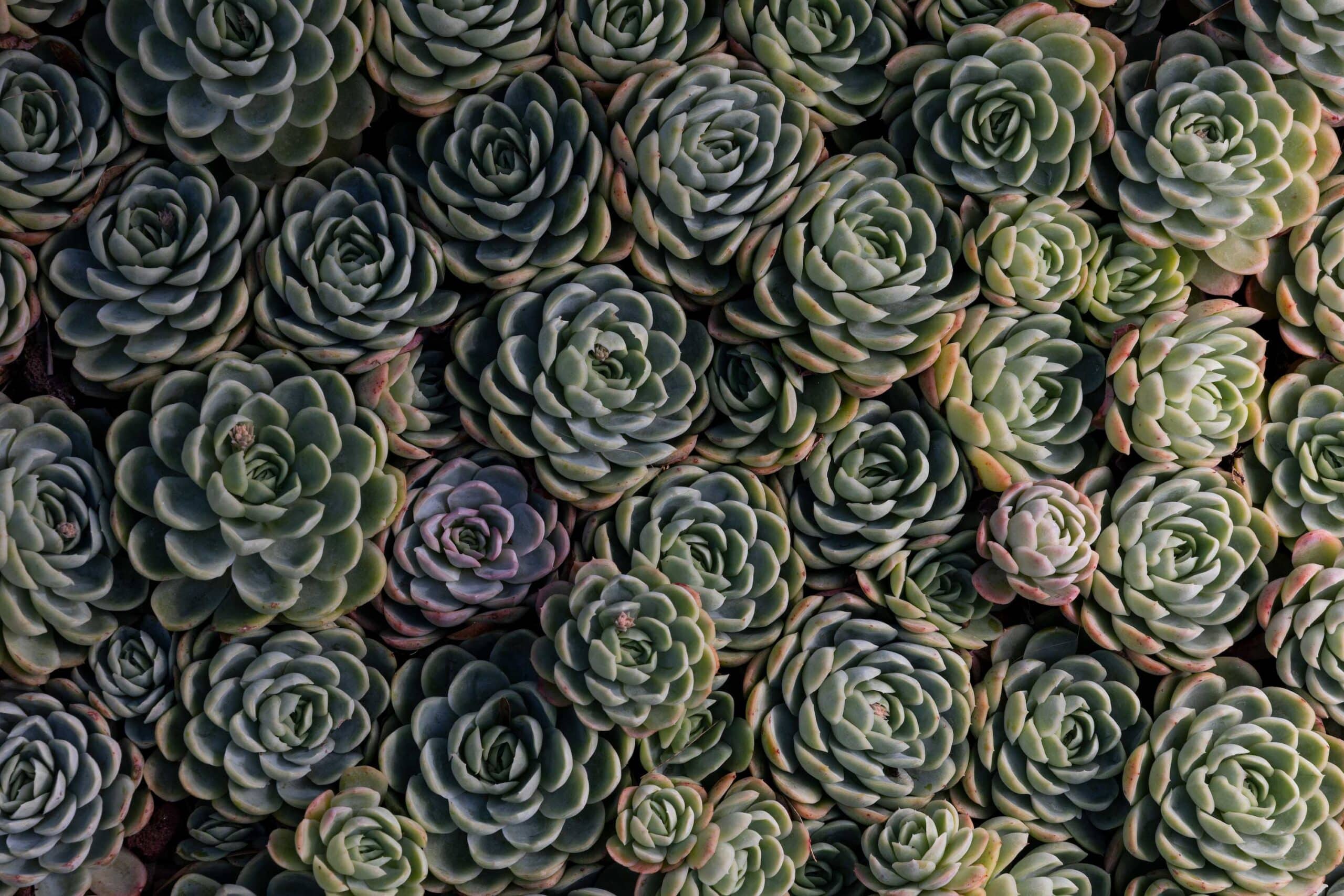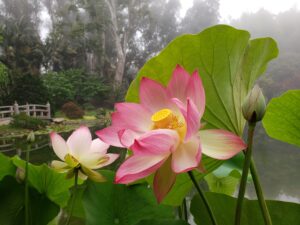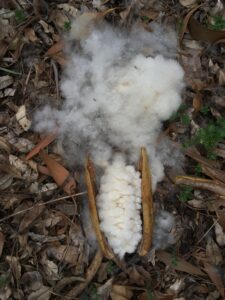
Plant Highlights
July
-
Nelumbo nucifera
sacred lotus
Highlight Month:
July
Nativity:
Ukraine to N. Iran, Russian Far East to Tropical Asia and N. & NE. Australia
Growth Habit:
Lotuses are aquatic perennials. They grow from tubers under the soil in still or slow-moving fresh water at a depth of six inches to three feet (or more). The large leaves and flowers rise above the surface of the water during the summer months in most temperate regions, although in the tropics, they may grow nearly year round.
Growing Requirements:
Soil depths should be a minimum of one foot and water depths can range from six inches to three feet. Full sun or at least six hours of sunlight a day will ensure vigorous growth and maximum flower production.
Features:
Lotus leaves are coated with a superhydrophobic waxy layer that sheds water in a self-cleaning mechanism called the “lotus effect.” The flowers of sacred lotus are in shades of pink or white while the closely related American lotus, Nelumbo lutea, has pale yellow or cream-colored flowers.
Where at Lotusland:
In the Water Garden and the Japanese Garden ponds.

-
Ceiba speciosa
silk floss tree
Highlight Month:
July, November
Nativity:
It is native to tropical and subtropical forests in South America (NE Argentina, Bolivia, Paraguay, Uruguay, S. Brazil).
Growth Habit:
Ceiba speciosa is a large charismatic tree featuring a bottle-shaped trunk. It is fast-growing and can reach heights of 30’ in just a few years and will mature around 40-60’ tall. The green trunk develops large attractive grey prickles with age. In the fall, the tree loses its palmately compound leaves and erupts in an impressive display of pink hibiscus-like flowers with creamy-white centers. Large fruit capsules split open the following spring to release the seeds surrounded by cottony fluff that can be used as stuffing or insulation, hence the common name “silk floss tree.”
Growing Requirements:
Plant in full sun with good soil drainage and water sparingly.
Features:
The genus Ceiba comes from the Spanish interpretation of the Caribbean Taino word meaning “giant tree.” This species is also called “palo borracho” in Spanish or “drunken stick,” referencing the awkward growth patterns sometimes found in older specimens. Ceiba (Chorisia) was previously grouped in the bombax family, Bombacaceae, along with other well-known members such as durian (Durio), baobab (Adansonia), balsa (Ochroma), and shaving brush tree (Pseudobombax). All have now been incorporated into the mallow family, or Malvaceae.
C. speciosa first was introduced to California horticulture by Dr. Francisco Franceschi in 1900. It is frequently planted along highways in Southern California and can be easily recognized in the fall when in flower.
Where at Lotusland:
Arboretum- but can be viewed from the Cypress Allée

-
Aeonium arboreum ‘Zwartkop’
Highlight Month:
July
Nativity:
Canary Islands
Growth Habit:
Sturdy succulent stems may reach 3 feet or more and are topped with a rosette of dark burgundy leaves. In full sun, the plant looks nearly black. With time, the plants will branch and become loosely shrubby.
Growing Requirements:
Full to partial sun and well-drained soil. Very drought tolerant.
Features:
Selection of Aeonium arboreum is grown for its striking foliage. As each rosette matures, it produces a cone-shaped inflorescence of many tiny yellow flowers.
Where at Lotusland:
Succulent Garden, Main House steps, and Dracaena Circle


